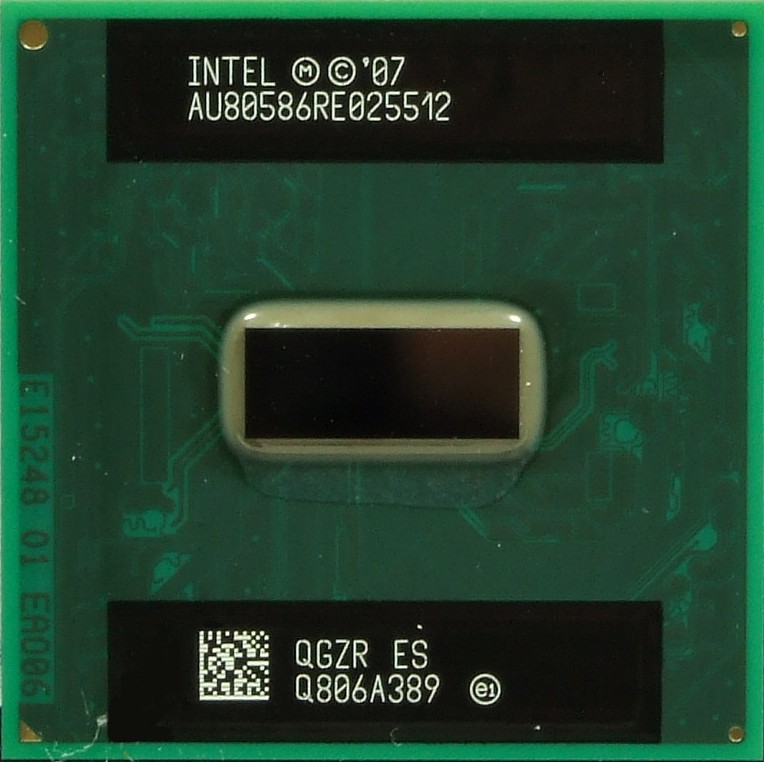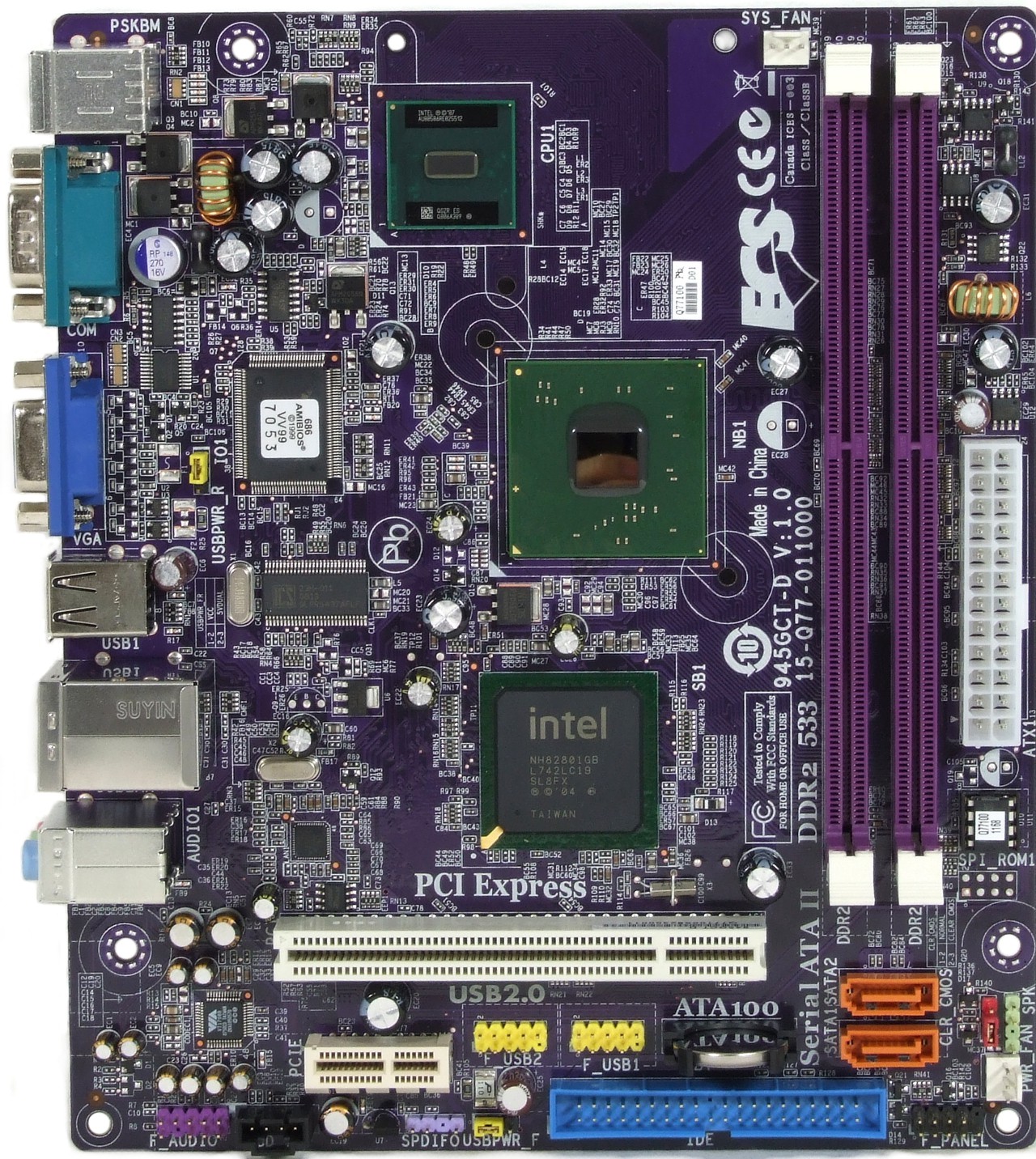Atom Benchmarked: 4W Of Performance
Intel Atom 230 At 1.60 GHz With Hyper-Threading
Intel’s Atom processor is currently the subject of much discussion. It’s positioned as an energy saving wonder, but also designed to act as an all-purpose solution. The processor gets away from complex architectures and large level two caches and closer to slimmed down energy saving CPUs tailored to the specific job they are intended to do.
A year ago at Intel’s Developer Forum, the company introduced its 45 nm Atom processor under the code name Silverthorne. The Atom processor cannot be purchased on its own, and until recently was only available as a complete solution in a notebook or UMPC. But Intel is now changing this and offering the Atom processor with an embedded board for the desktop market. The new code name is Diamondville.
The actual Atom processor is, with a die size of just 25 mm², absolutely tiny when compared to a Core 2 Duo at 143 mm². And the number of transistors - 47 million - is low compared to the Core 2 Duo, which has 291 million. But this is the only way the Atom CPU is able to manage the sensationally low energy consumption of just 4 watts. The chip yield during manufacturing is also very high thanks to the tiny format ; Intel can theoretically get up to 2,500 Atom processors from a single 300 mm wafer.
The Atom 230 (Diamondville) processor differs from the Silverthorne model. It does not use an energy saving mobile chipset, but rather a cheaper desktop chip set. This does, however, have a dual channel memory interface, enhancing performance. But the Atom 230 must also manage without the SpeedStep energy saving function - not like that’s a problem for the efficient CPU.
We tested the ECS 945GCT-D embedded board with a 1.60 GHz Atom 230 processor. The energy consumption of the overall system came in at just 40.5 watts, which sets a new record in our test lab. The speed of the Atom platform turns out to be sufficient for surfing the Internet and playing DVDs, but you need to employ the right software in order to use the unit sensibly. The use of Hyper-Threading technology means that the speed of the tiny Atom processor is effectively increased by up to 37%.
There are currently three different types of Atom processor available : the Z5 series for Mobile Internet Devices (MIDs), the N270 for cheaper notebooks (Netbooks) and the 230 for embedded desktop boards (Nettops).
| Model | Clock Rate | Cache | FSB | Platform |
|---|---|---|---|---|
| Atom 230 | 1.60 GHz | 512 kB | 533 MHz | Nettops |
| Atom N270 | 1.60 GHz | 512 kB | 533 MHz | Netbooks |
| Model | Clock Rate | Cache | FSB | Platform |
|---|---|---|---|---|
| Atom Z540 | 1.86 GHz | 512 kB | 533 MHz | MID |
| Atom Z530 | 1.60 GHz | 512 kB | 533 MHz | MID |
| Atom Z520 | 1.33 GHz | 512 kB | 533 MHz | MID |
| Atom Z510 | 1.10 GHz | 512 kB | 400 MHz | MID |
| Atom Z500 | 800 MHz | 512 kB | 400 MHz | MID |
Get Tom's Hardware's best news and in-depth reviews, straight to your inbox.
Current page: Intel Atom 230 At 1.60 GHz With Hyper-Threading
Next Page Overview Of Atom Technology-
jaragon13 Shouldn't it be on 9 - cooling and temperatures,be idle and load,instead of idle and idle? >.Reply -
When you look at the power consumption on load and compare it to the slowness of the chip while performing on load, it becomes clear why it only uses 4 watts more...Reply
-
A CPU without a platform is useless.Reply
Analyzing the Atom platform quickly from the power/performance perspective.
CPU name / idle W / load W/ Lame (seconds) / total Lame W used
Atom 230 / 40.5 W / 44.2 W / 773 s / 9.49 W
Celeron 220 / 44.9 W / 55.4 W / 375 s / 5.77 W
E2140 / 58.5 W / 69.5 W / 271 s / 5.23 W
Clearly the Atom platform is the most inefficient power/performance wise.
At idle you might win some W, but as soon as you try to do something you spend more power and waste more time.
There are other things you should consider, the frustration of having to wait for things that now we are used to do near instant and the inability to play HD video or use any significant graphics.
The only thing positive for atom is it's price. It's cheap. And maybe with a new chipset it might even be power efficient. But for now it's just cheap.
-
neiroatopelcc I wonder if it'd be able to play games if one were to equip it with a pci based 2400pro & 4gb of memory?Reply
Also, I wouldn't be surprised if someone invents a voltmod for those boards, so they can increase voltage for cpu, mch & ich enabling 2ghz+ speeds -
nachowarrior so in other words atom is pretty much a failure unless it's pumped into a tablet or umpc? and even then apparently isn't cost effective or readily available, nice...sounds like a great product launch.Reply -
I ran a google search for ECS 945GCT-D mainboard, and could not find it.Reply
I don't get it, why do you publish tests with products that don't even exist on the vendor web site?
Thank you, anyway -
Lans Raiden, while your numbers are true, I think a fairer comparison would be to use 773s for all processors (meaning the rest go to idle alot quicker). I suppose you can power your computer down afterwards or start up a web browser etc.Reply
Atom 230 (773s load / 0s idle) : 9.5W
Celeron 220 (375s load / 398s idle): 10.7W
E2140 (271s load / 502s idle): 13.4W
Sempron LE-1100 (43.9W idle, 70.4W load, 301s load / 472s idle): 11.6W
Sure this is biased against the Atom (not going idle at all) but with 4W delta between load and idle, I am too lazy to change the numbers already used.
I find it comparing the Atom to a Sempron LE-1100 more and Celeron 220 interesting:
"A Celeron at 1.20 GHz is 35% faster than an Atom at 1.60 GHz, but the Atom only consumes a fraction of the energy used by the Celeron. The AMD Sempron system, which uses almost the same energy in idle mode as the Atom system, is 43% faster."
-
haley0918 in anyway, despite of the low power and low performance, i still think it'll also be good as simple file server or home server besides as umpc. for experts, it'll be enough for some robotics and control application. just like the one used for Aiko in http://www.projectaiko.comReply

